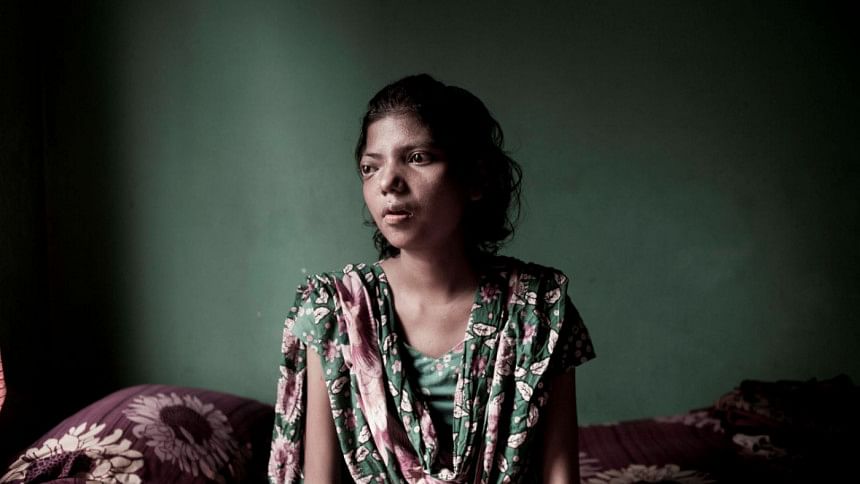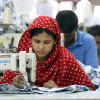Mourning the violence of capital(ism)

ON March 21, 2014, I received the news that Sumaya Khatun, my friend and comrade, a 16-year-old girl who used to work at Tazreen Garments, passed away after battling a cancerous tumour for over a year. The last time I saw her, the night before my flight to Toronto, she was in the hospital; she had refused to let go of my hand. "Don't go," she had implored. "What if I die before you come back?" she had asked, sulking. I wanted to stay longer, but I had a farewell party to attend (bourgeois life, after all, must go on), so I promised her I'd be back before she knew it, and that I'd bring with me all the chocolates in the world (she was a big fan of sweet things).
Now she's gone. I think about Sumaya often, the immeasurable pain she endured during her short lifetime, and of her mother, who, for 14 months, had spent every waking moment of her life looking after her dying daughter (but despite all the cruelty of capitalism, always with a smile), and of my activist friends, disoriented and exhausted, who had done everything in their power to save Sumaya from becoming yet another statistic to add to the death toll of Tazreen. Every time I think of her, I am reminded of a powerful short story by Ursula K. Le Guin called The One who walked away from Omelas, where the happiness, success and prosperity of the inhabitants of a utopian city, Omelas, depends on their ignoring and forgetting the perpetual torture and humiliation of a child locked in a broom closet. As I think about Tazreen, the child in the broom closet becomes Sumaya, and we, the citizens of Omelas. She must die (/suffer), so I can live. She is my liberation, my happiness. What does it mean, then, for me to mourn her death, to be in solidarity with her?
In Frames of War: When is Life Grievable, Judith Butler argues that frames of recognisability mediate how we come to understand some lives as more meaningful and mournable than others. These frames -- which are always shifting -- determine how we recognise us as subjects (as "I") and acknowledge our relations to Others in the world, not all of whom we consider to be "subjects" in the same way, or at least to the same degree. That is why we mourn for some lives but respond with coldness to the loss of others. Mourning, here, is not an innocent or innate act, but one that is highly regulated by regimes of power.
For Butler, an ungrievable life is one that cannot be mourned because "it has never lived, that is, it has never counted as life in the first place." In the context of garment workers in Bangladesh, however, the argument is complicated by the notion that the workers are not invisible as such, but are integral to the national imagination as the bearers of the country's progress and economic growth. Collectively, these workers -- not just their labour but their lives -- are valuable because they exist within and reproduce the formal as well as informal spaces of capitalist appropriation of value. However, just because the lives of "unskilled" women workers in global manufacturing factories are productive for capital does not signify that all life is equally valorised and valorisable. After all, as nameless, faceless, expendable labour, the female workers are already always on the path of eventual demise, so what does it matter if their deaths are accelerated by factory accidents? They are replaceable, inter-changeable and disposable figures in capitalist logic, whose very expendability makes them the most valuable kind of worker. The question, then, becomes: how does one grieve that which is already disposable? Or rather, what exactly is grieved when such loss does occur?
Deemed worth $1,250 by Bangladesh's labour laws, the worker produces value for the capitalist not only through her labour power, but through the disposability of her life; the 'cheapness' of her life allows the capitalist to violate even the most basic of safety codes to minimise production costs and increase profit. What else but such a conception of disposability can explain why factory managers methodically lock the doors of the factories when fires break out? Or why nine-storey buildings are constructed with no foundation or fire escapes, or why workers are forced to go work in a building that has a crack and has been asked to evacuate, as in the case of Rana Plaza? Death, if I may be permitted to state the obvious, is built into the system(s) of capitalist expansion and exploitation.
Karl Marx had long argued that a surplus labouring population, independent of the limits of the actual increase of population, is both a product and a precondition of capital accumulation. It is the expansion and contraction of the surplus population, he further stated, that determines the rate of wages, the redundancy in workers ensuring that the real wages don't rise to such an extent that it threatens accumulation. Now, it is no longer just the labour of this reserve army that is "surplus" but their lives as well, providing the impetus for capitalist appropriation and accumulation.
An ethical politics of mourning must begin with a critical acknowledgment of the ways in which both "I" and "they" are constituted and positioned differently through capitalist relations. What makes the lives of the garment workers disposable and how am I implicated in its (re)production? What does it mean for me to mourn her death when she dies so I may live a good life? Simple "acknowledgement" of privilege and complicity means little beyond liberal empathy if we cannot commit to changing the existing regimes of power and relinquish the privilege that come with it. Real mourning, one that respects the departed at least, can only take place once we acknowledge how we are complicit in the murders that took place in Rana Plaza or Tazreen and work towards a world where my happiness does not lie in the inevitable collapse or burning of a nine-storey building, in the death of Sumaya.
The writer is an activist and journalist.

 For all latest news, follow The Daily Star's Google News channel.
For all latest news, follow The Daily Star's Google News channel. 







Comments